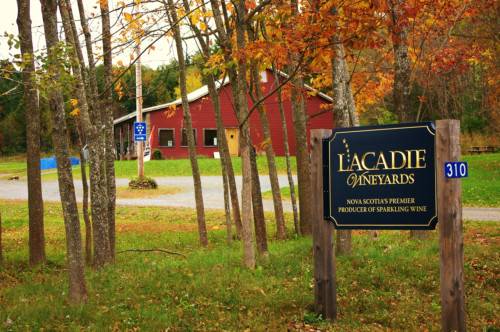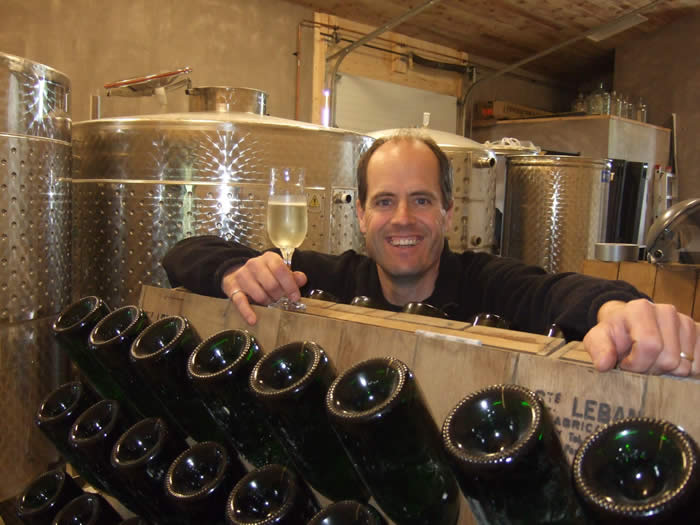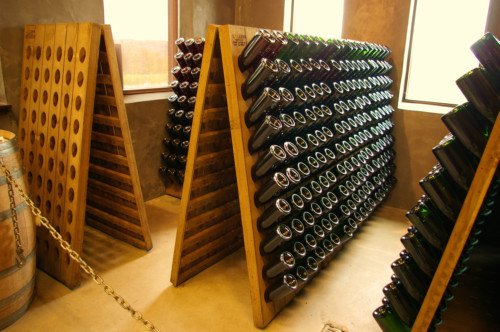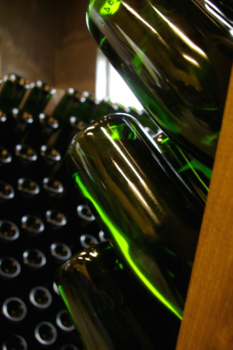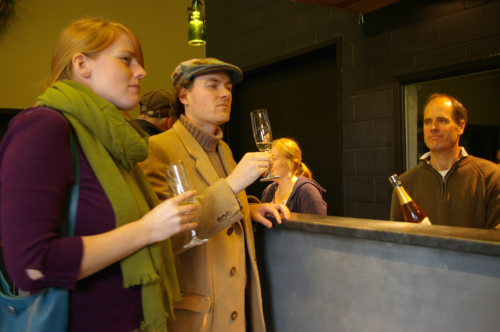Bring on the Nova Scotia Bubbles
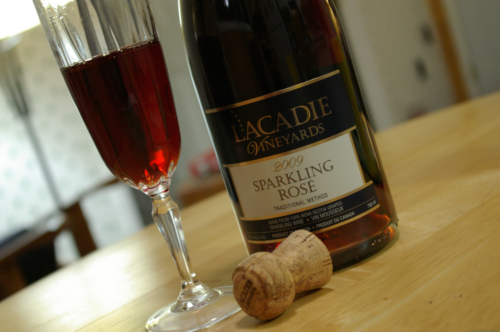
There are times when a glass of bubbly is not just called for, but required.
These times deserve something special to add a visible sparkle to an already exciting moment. Sometimes it’s easy to think any old wine will do and that we should keep the bubbly for a “really exciting moment”, but isn’t it up to us to decide what’s worth celebrating?
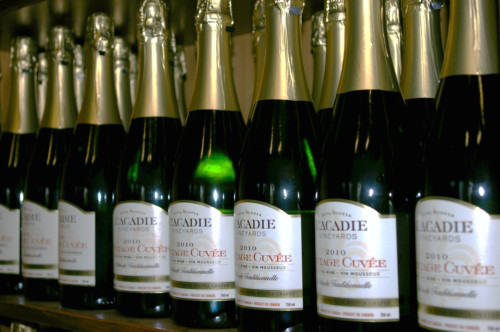
When I was little, I used to see an ad for Baby Duck Wine. These ads would upset me to tears, at least until my mother explained it was actually not made from the cute little ducklings waddling across the screen. I remember my parents buying bottles for their Christmas and New Year’s Eve parties which, of course, we were not invited to so I figured it must have been the fanciest, best treat ever.
Years later, I understand that while the brand itself may not have been the fanciest, its presence added something special to the evening’s experience, and I still think that a glass of bubbly is a treat worth having more than we do. Fortunately in Nova Scotia, we now have many options when it comes to local bottles of sparkling to celebrate big occasions, as well as everyday successes.
My friend Kate and I made a visit to L’Acadie Vineyards, one of Nova Scotia’s great wineries. I have a soft spot for our local wineries who have all worked so hard to grow the right grapes, make the best wines and promote our wine country as the spectacular destination it is. It was Kate’s first visit to one of our wineries and she was duly impressed by the beauty of the valley.
It was a crisp fall day and the last day of the Magic Winery Bus, a ‘Hop On, Hop Off’ bus running from Wolfville to the local wineries and back. We happened to arrive at L’Acadie Vineyards between crowds and had an opportunity to look around the shop and have a tasting with the owner and winemaker, Bruce Ewert.
One corner of the shop was cordoned off and full of racks of inverted bottles. Bruce explained that L’Acadie focuses mainly on making sparkling wine in the traditional method of Champagne. Although only the wines made in one region of France can officially be labelled as Champagne, the centuries-old methods are still being used to this day, both in France and around the world. Most sparkling wines in liquor stores are simply carbonated, meaning they have been infused with carbon dioxide, but those made in the traditional method take much more time and effort to make.
Bruce explained that his wines are fermented in the bottle and showed us the yeast “lees” visible in the neck of each bottle. As the wine ages, the yeast ferments the sugars and releases gas into the liquid, creating the natural bubbles we all know and love.
To keep the yeast active and ensure an even fermentation, the bottles are turned, or “riddled”, a quarter turn each day by hand, marked by a painted line on the bottom of the bottle. He explained that the bottles are stored first on their sides to maximize the surface area available to the yeast, and are gradually tilted more and more to collect the yeast in the cap. Longer exposure to the yeast also results in a “toasty” quality to the wine.
Once the wine has completed the fermentation and aging process, the remaining yeast needs to be removed. This was once done by draining a small amount of wine from each bottle but is now done by flash-freezing the end of the neck and expelling the ice plug containing the yeast. This ensures a clear product while minimizing the amount of waste. I started to realize how many times one bottle needed to be touched just to make it to a shelf. If your moment deserves to be celebrated, these bubblies sure put in their time to be worthy to celebrate with you.
We tried several of L’Acadie’s wine, including their Vintage Cuvée, Vintage Cuvée Rosé, and Sparkling Rosé, all of which were made in this same labour-intensive way. The Sparkling Rosé was my favourite of the day. With its aromas of raspberry jam, and I could easily imagine drinking this with a turkey dinner or pork roast.
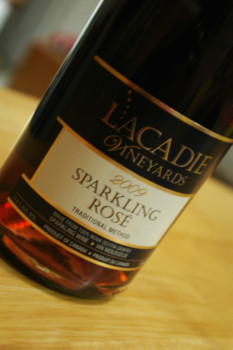
Also available is the award-winning Prestige Brut which recently showed the world its strength in Dijon, France, bringing home a silver medal in the Effervescents du Monde (Best Sparkling Wines of the World).
I was also excited to try a test that I had learned from Corrine Maund, sommelier at Lane’s Privateer Inn. She taught me that when compacted against the tongue, a traditional method sparkling wine will become creamy and frothy while a carbonated wine will feel prickly.
We talked quite a bit with Bruce about the winery’s designation as organic. He explained that it is no longer enough for the grapes to be certified organically grown but the entire process and facility needs to be certified. The grapes Bruce grows on-site are grown without the use of herbicides, pesticides or synthetic fertilizer, and the other vineyards that supply him with grapes have all recently received their certification as organic farms too. This means that in the future, all of L’Acadie’s wines will proudly bear the organic label.
By the way, I tested my theory that the Cuvée Rosé would go well with roast pork, and guess what? I was tickled ‘pink’ to be right.

